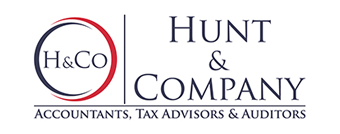The extension of the JKP by six months to 28 March 2021 will see the scheme tapered with respect to both the December 2020 and March 2021 quarters for all eligible employees and business participants to provide appropriately targeted assistance. In addition, a two-tiered payment system will apply based on hours of work or active engagement.
Importantly, employers and entities with eligible business participants are able to enrol for the JKP for the extension period even where they have not previously enrolled, subject to meeting all the new and existing eligibility criteria (e.g., a business was carried on in Australia on 1 March 2020).
To qualify for the JKP after 27 September 2020 (i.e., for JobKeeper 2.0) businesses must satisfy two separate decline in turnover tests, being:
- the original projected GST decline in turnover test – adjusted under the Amending Rules to include a comparison of the projected GST turnover of any of the calendar months from March 2020 to December 2020 (or any of the June 2020, September 2020 or December 2020 quarters) against the actual GST turnover of the relevant 2019 comparison period; and
- the new actual GST decline in turnover test.
However, whilst entities are technically required to satisfy both the original projected GST decline in turnover test and also the additional new actual GST decline in turnover test from 28 September 2020, practically speaking, this may be a moot point. This is because:
- entities that are currently in the JobKeeper scheme would have already satisfied the original projected GST decline in turnover test (and are not required to satisfy it again); and
- entities entering the scheme for the first time would generally also satisfy the original projected GST decline in turnover test if they can demonstrate a fall in their actual GST turnover for a relevant quarter (i.e., either the September 2020 or the December 2020 quarter, as applicable).
Variations may occur in the calculation of the required projected or actual GST decline in turnovers (e.g., the sale of capital assets such as business premises are included in actual GST turnover, but not included in projected GST turnover). Refer to the ATO’s Law Companion Ruling LCR 2020/1.
With respect to the new actual GST decline in turnover test, the Commissioner may, by legislative instrument, determine that certain supplies, or classes of supplies, are to be treated as being wholly or partly made at a particular time. For this purpose, the Commissioner has registered Coronavirus Economic Response Package (Payments and Benefits) (Timing of Supplies Made and Decline in Turnover Test) Rules 2020 (No.1), which stipulates that a supply must be treated as being made, or partly made, in a relevant test period to the extent that any GST payable on the supply would be attributed to that test period. Importantly, the basis of accounting to be used for this purpose (i.e., cash or accruals) will be dependent on the entity’s circumstances (this will broadly be the basis for which the entity is registered for GST for).
Source: National Taxation & Accountants’ Ltd : September 2020
